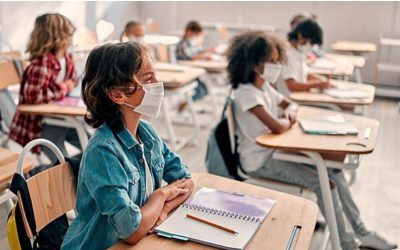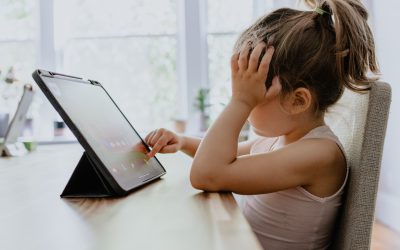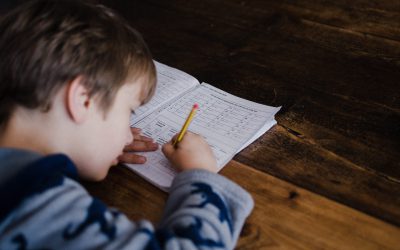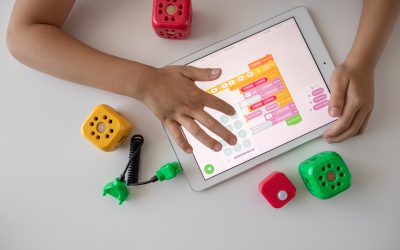Monthly International news update on COVID-19 pandemic and Education, April
30 Apr 2020 | News
As of 28 April, UNESCO has counted as many as 186 countries that have closed schools, affecting over 1.29 billion learners from pre-primary to tertiary education. Some of the first countries, such as Denmark, China and Taiwan, have started to reopen their schools and this number is increasing as this newsletter comes out. This article provides an overview of the main themes that were in the COVID-19 news last month. We offer insights in which measures are taken by other countries to deal with their challenges with school closures. We describe the inequalities in education as a result of the COVID-19 pandemic and how other countries deal with these inequalities; the challenges in continuing of learning and used tools; how the social and emotional well- being of children is affected and how schools and parents can support; and the initial experiences of countries where schools are reopened after closure.
30-04-2020

Inequalities in education
It is already well known that children lose some of what they learned while they are out of school every summer. It particularly affects low-income students and students with special needs. Those students start kindergarten with achievement gaps already. The combination of existing achievement gaps and being out of school for a long period is expected to worsen the situation. With 1.29 billion children out of school, there are more concerns about the longer-term effects on learning, since previous crises such as the 2008-09 recession had a substantial negative effect on learning. The world bank has summarized three possible scenarios of learning loss:
- The first is a reduction in average learning levels across the distribution, despite the best offers of school systems to offer distance learning.
- The second is a flattening or skewing of the learning curve due to highly unequal effects of the crisis. This is a scenario in which children who are at the top will pull ahead, while students at the bottom fall further behind.
- A third scenario is where the curve changes due to drop-out of learners who permanently leave school (e.g. girls in developing countries, or children from working class families who go into earlier employment and don’t return to school). UNESCO and Plan International warn for that increased drop-out rates can lead to a further entrench of gender gaps in education and to increased risks of sexual exploitation, early pregnancy and forced marriage.
Many children, especially those coming from disadvantaged backgrounds, rely on free or discounted school meals. Therefore, in Japan, families are receiving a refund for school fees and school lunches are being delivered to families in several school districts. And Spain is ensuring nutritious meals for vulnerable children by giving redeemable credit cards for any commercial food establishment (World Education Blog, April 10th).
Ensuring continuation of learning
For almost all countries ensuring the continuation of learning after school closures was the first priority (OECD, 15 April). Most countries are using the internet, providing online platforms for continued learning. However, equity in access to ICT-based learning is a major concern, as students from under-privileged backgrounds tend to have less access to ICT-devices outside school. Various actions are taken to address this challenge. For instance, China, Argentina, Iran are providing computers to students from low-income families and are offering mobile data packages and telecommunication subsidies; teachers from Portugal are delivering hardcopy school materials such as textbooks, at home; and Wi-Fi on school buses are driven into low-income neighbourhoods to provide students internet access (Rand Corporation, April 2nd).
Adjusting school and exam calendar
Prolonged school closings have affected the school and exam calendars in most of the countries worldwide. Several actions has been taken to reschedule or replace examinations and assessments. For instance, the United States has cancelled all state tests and China offered online exams. In addition, countries such as Turkey and Viet Nam have adjusted the school calendar to accommodate lost days of learning, by offering lessons during the summer period.
Social and emotional well- being of children
When schools close, many children miss out on social contact that is essential for the learning behaviour and development of the child. Also, school closures can lead to increases in depression and anxiety among children, which have a long-term impact. Research among 2.000 students with mental needs in the UK shows that 83% of students experience mental health issues from the Corona virus pandemic. Students indicated that (face-to-face) online contact with friends and classmates helps, as well as physical activities and watching movies together.
Online interventions, such as a podcast designed for children and adults to help practice their social-emotional skills (The Imagine Neighborhood), are being used more often. Interactive online lessons can also reduce the feeling of isolation. For example, in China and Singapore “virtual classrooms” are used, an online learning platform where teachers have contact with all students at the same time. In addition, in Japan, Spain and the United States, psychological assistance is provided by a 24h hotline to avoid the isolation feeling (World Education Blog, April 2nd). Also, first minister Nicola Sturgeon of Scotland has stated that more attention should be paid to the impact of working online on children’s mental health and has therefore announced an online application called “Mind Yer Time” which aims to teach children about healthy screen use and doing school work online. In Spain, where strict lockdown rules apply and children are not allowed to leave the house for longer than a month, the government has relaxed the rules for children after calls of parents to let children out.
Recruitment of teachers
Most of the entering of new teachers and the leaving of teachers occurs in April and May as teachers are obliged to resign by the end of May under standardised terms and conditions. TeacherTapp is working with SchoolDash and The Gatsby Foundation to create a guide to recruitment season. Data shows that around 9% of teachers were planning to move but have decided not to, and a further 6% are undecided. This uncertainty is likely to slow vacancy rates and slow the number of candidates looking to change jobs. To prevent teacher shortages China has made teacher training courses to qualify teachers available online and In Japan temporary teacher licenses are being issued, on a case-by-case basis, for teachers who could not participate in the license renewal training. These licenses are valid until teachers are able to participate in the training.
Reopening schools
In April we saw initial experiences of countries where schools reopened after closure. Danish primary schools have become the first in Europe to reopen. The New York Times has written an article about the measures implemented in Danish primary schools. For example: the school’s floors have been covered with new markings, showing pupils how far apart they have to stand; pupils enter through several side doors; parents are not allowed to enter the school building; teachers are not allowed to gather in the staff room; children have their own desks with two yards between desks; strict hygiene rules; and in order to maintain the desired distance, each class is divided into two to three groups and taught outside as much as possible. More schools are also reopening in China where strict rules apply. For example, students wear face masks and their temperature is checked with thermal cameras. In Taiwan students and staff are wearing masks and their temperature is checked when entering the school. In class, desks are separated to allow for social distancing, while all windows and air vents in classrooms will open during the day. Schools which have two or more confirmed positive cases of coronavirus must cancel all classes as a precautionary measure (The Telegraph UK, April 20th).
Sources
https://en.unesco.org/covid19/educationresponse
https://en.unesco.org/covid19/educationresponse/solutions
https://en.unesco.org/news/covid-19-school-closures-around-world-will-hit-girls-hardest
https://www.rand.org/blog/2020/04/schools-pivot-online-in-wake-of-covid-19-qampa-with.html
https://www.tes.com/news/colleges-must-collaborate-protect-mental-health
See also information for:
Most recent blogs:
How LEARN! supports primary and secondary schools in mapping social-emotional functioning and well-being for the school scan of the National Education Program
Jun 28, 2021
Extra support, catch-up programmes, learning delays, these have now become common terms in...
Conference ‘Increasing educational opportunities in the wake of Covid-19’
Jun 21, 2021
Covid-19 has an enormous impact on education. This has led to an increased interest in how recent...
Educational opportunities in the wake of COVID-19: webinars now available on Youtube
Jun 17, 2021
On the 9th of June LEARN! and Educationlab organized an online conference about...
Homeschooling during the COVID-19 pandemic: Parental experiences, risk and resilience
Apr 1, 2021
Lockdown measures and school closures due to the COVID-19 pandemic meant that families with...
Catch-up and support programmes in primary and secondary education
Mar 1, 2021
The Ministry of Education, Culture and Science (OCW) provides funding in three application rounds...
Home education with adaptive practice software: gains instead of losses?
Jan 26, 2021
As schools all over Europe remain shuttered for the second time this winter because of the Covid...





